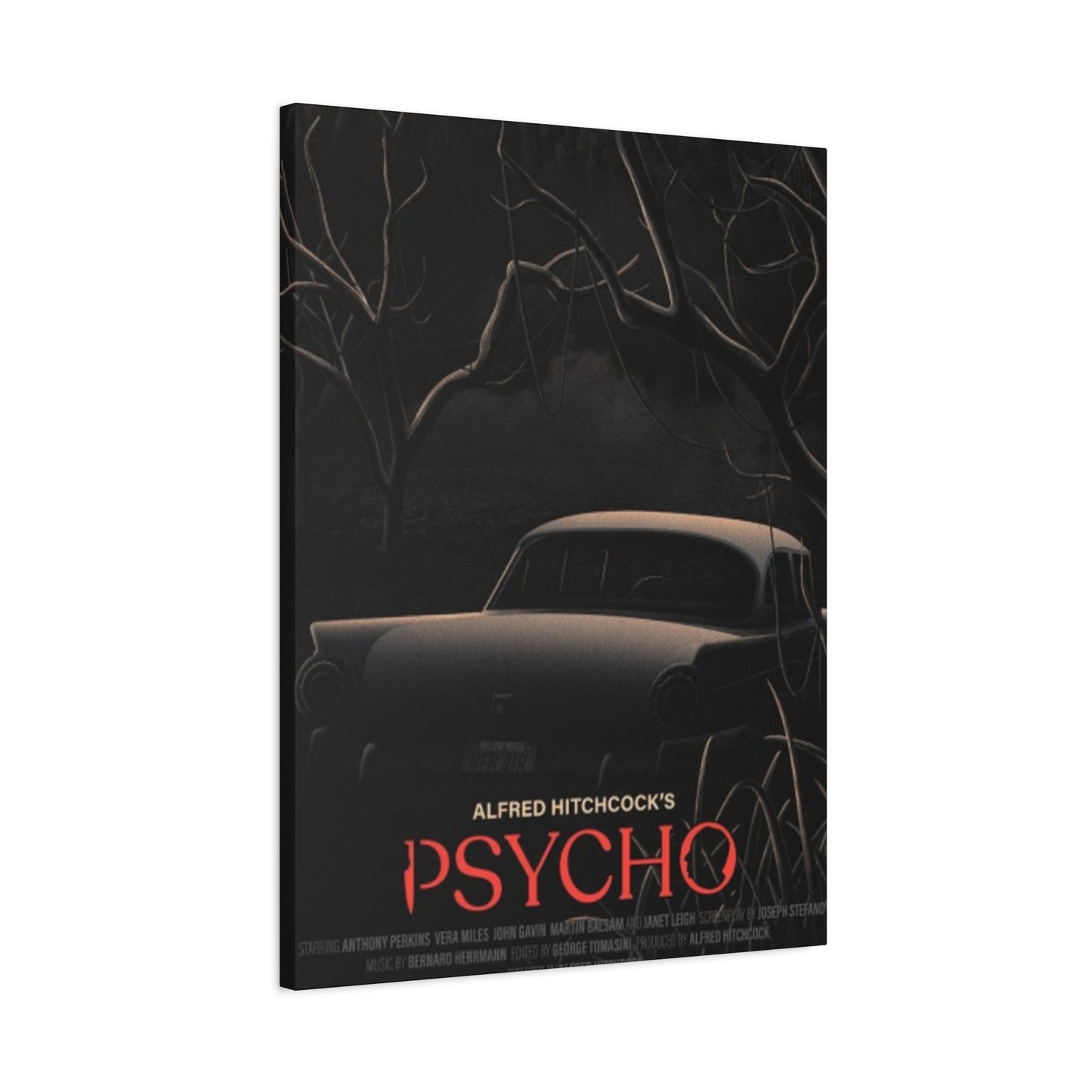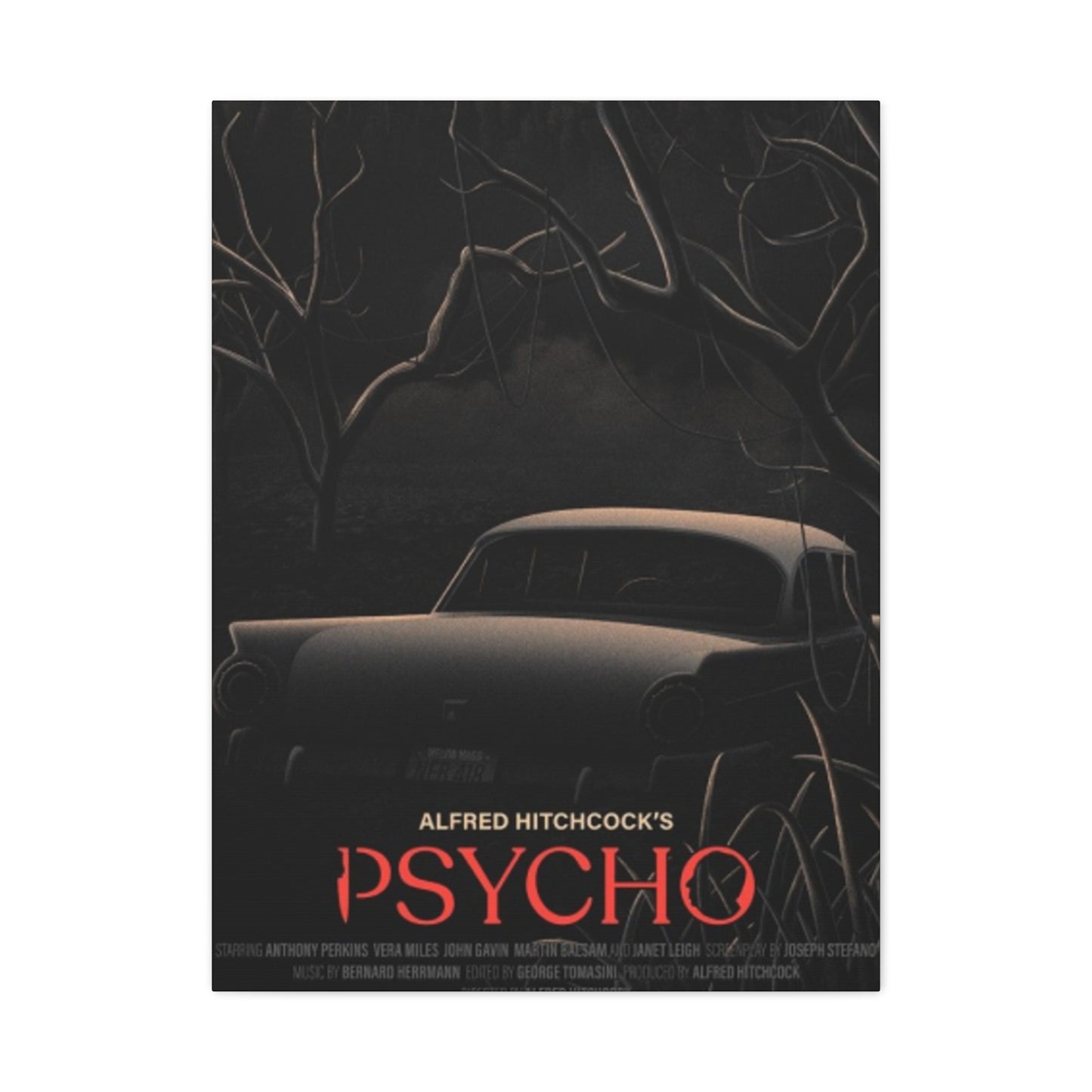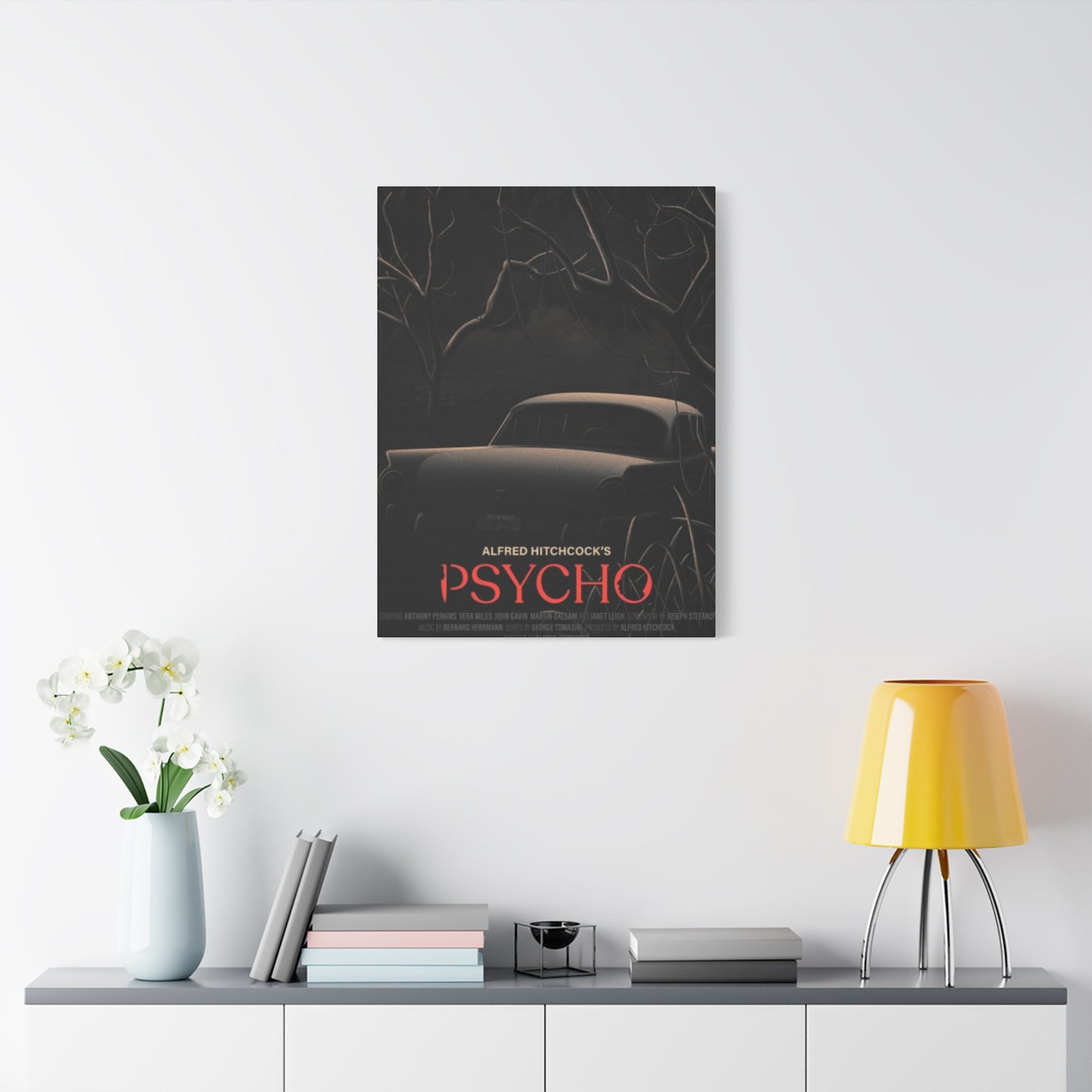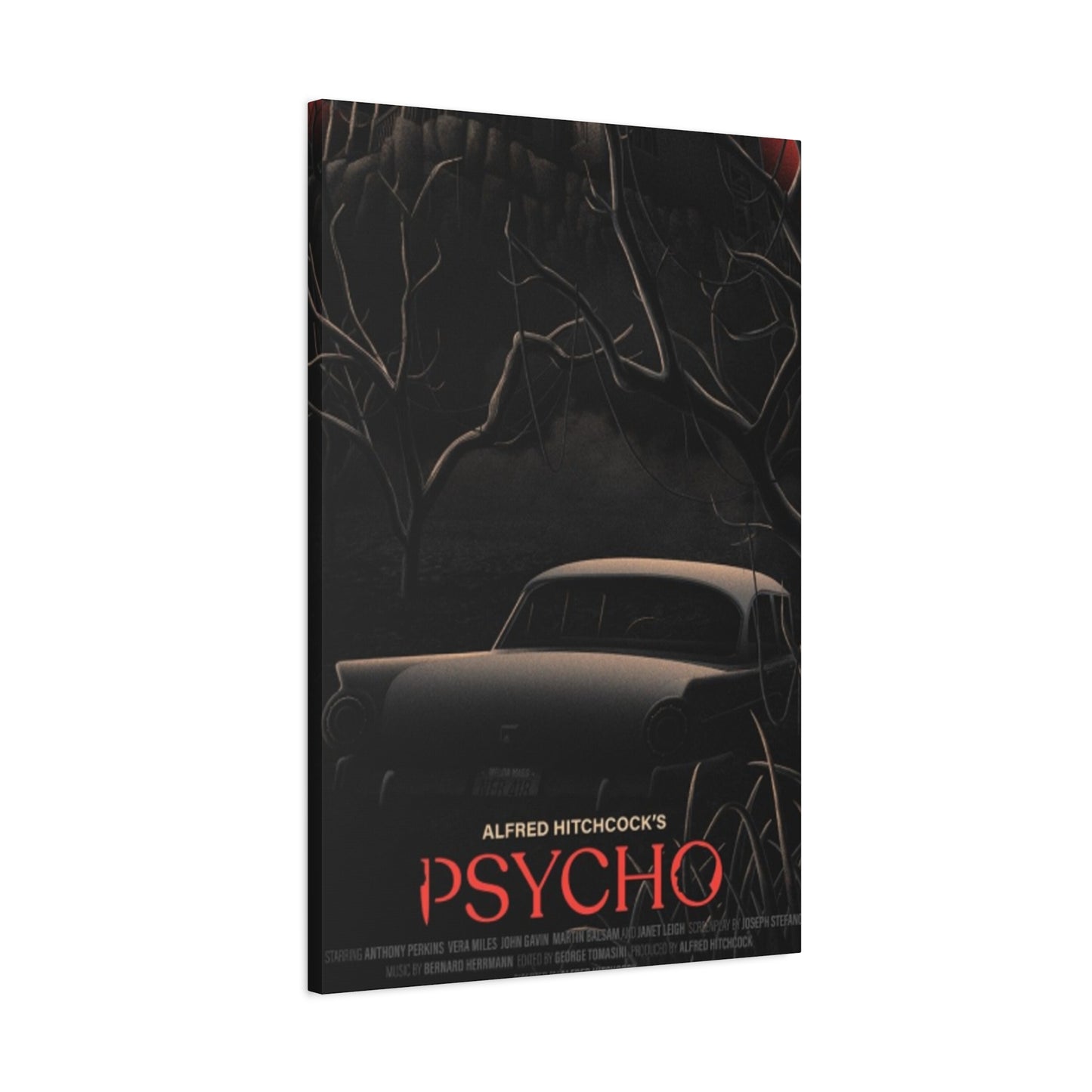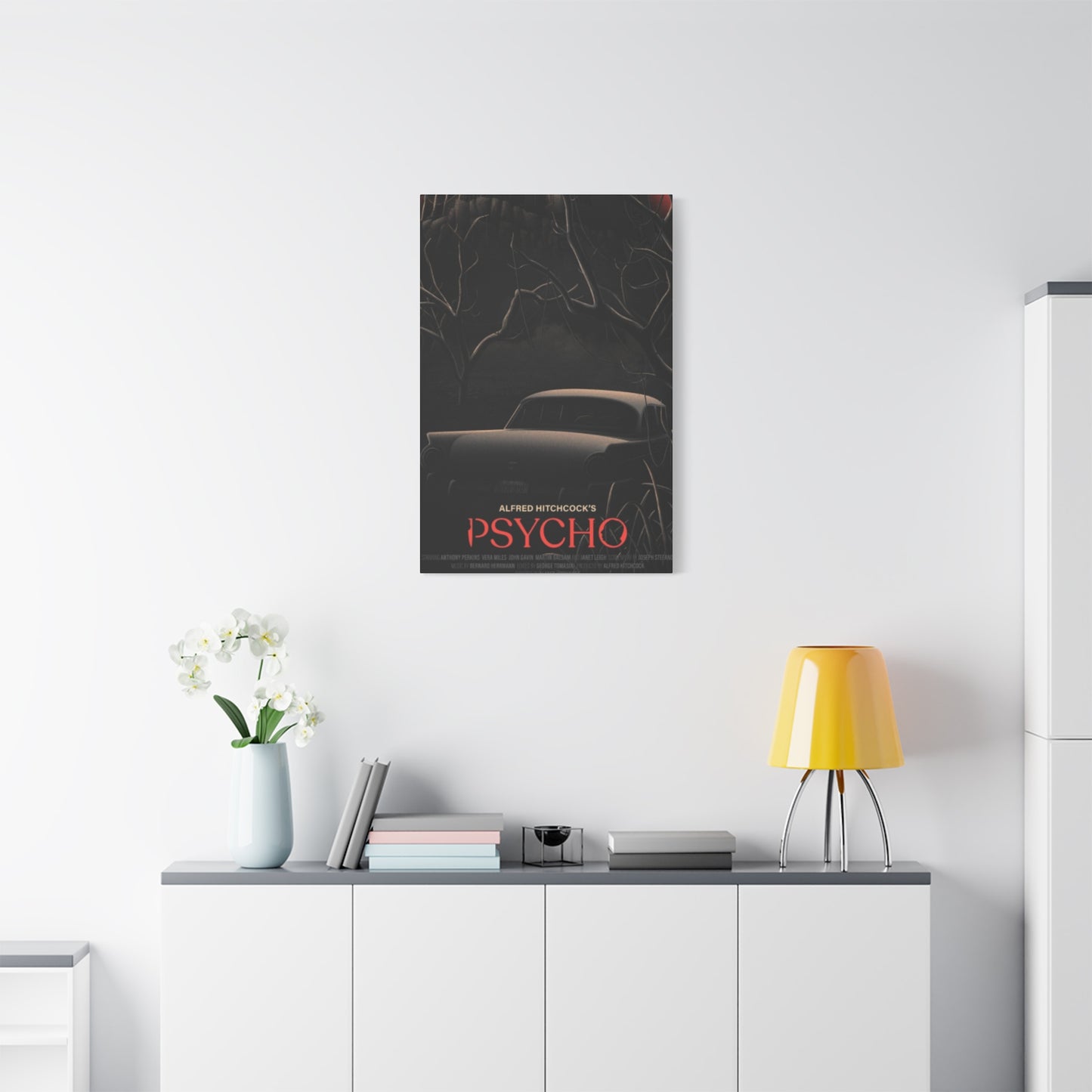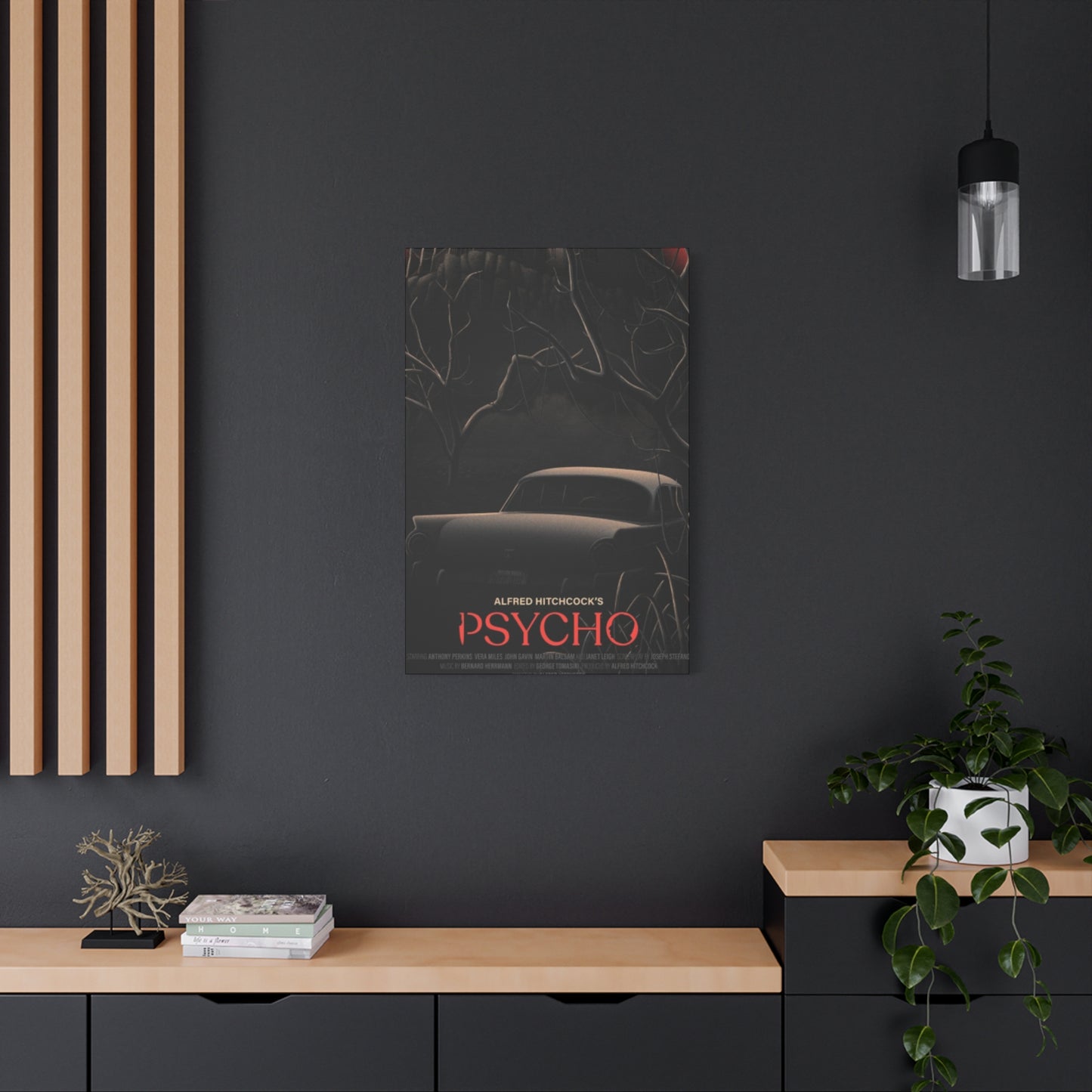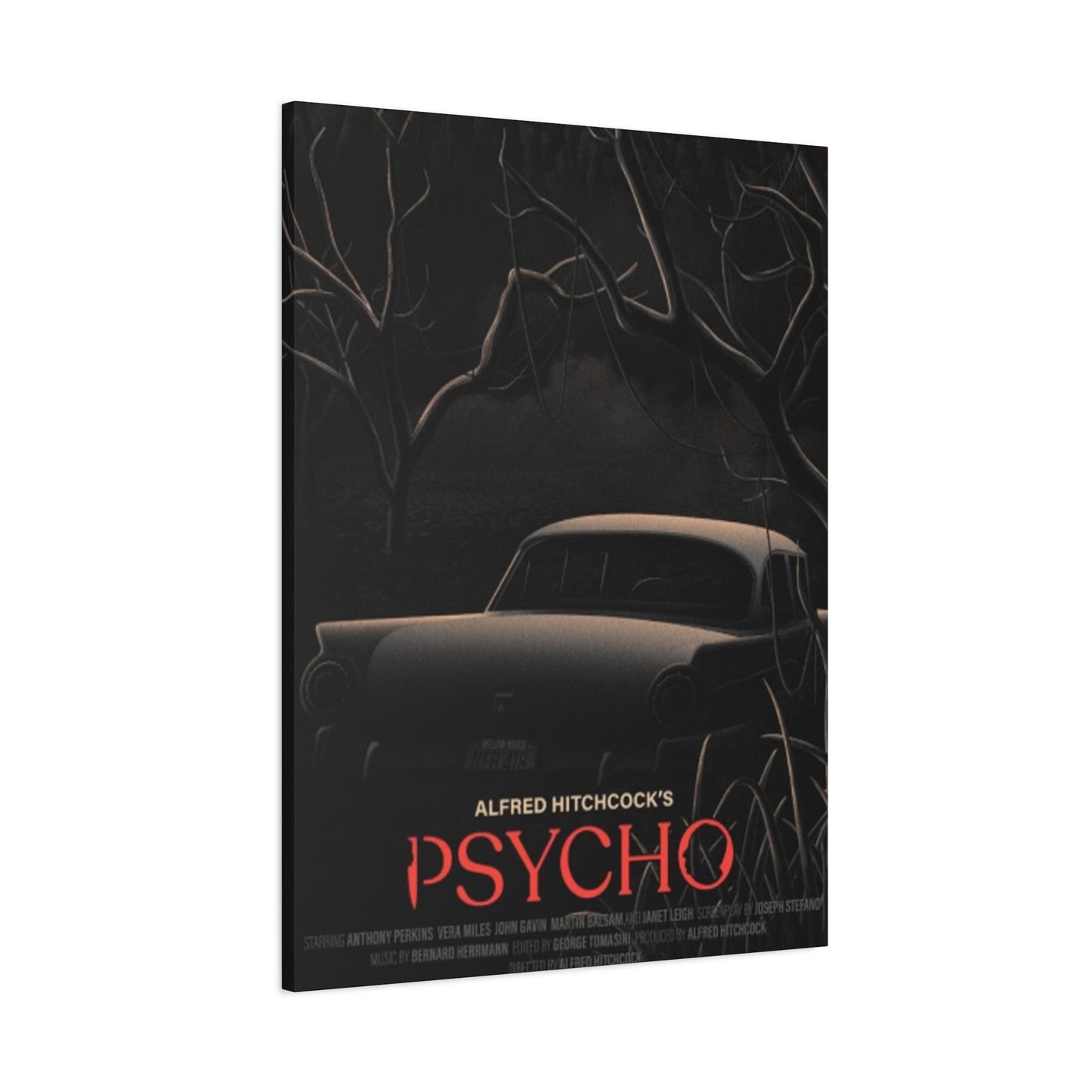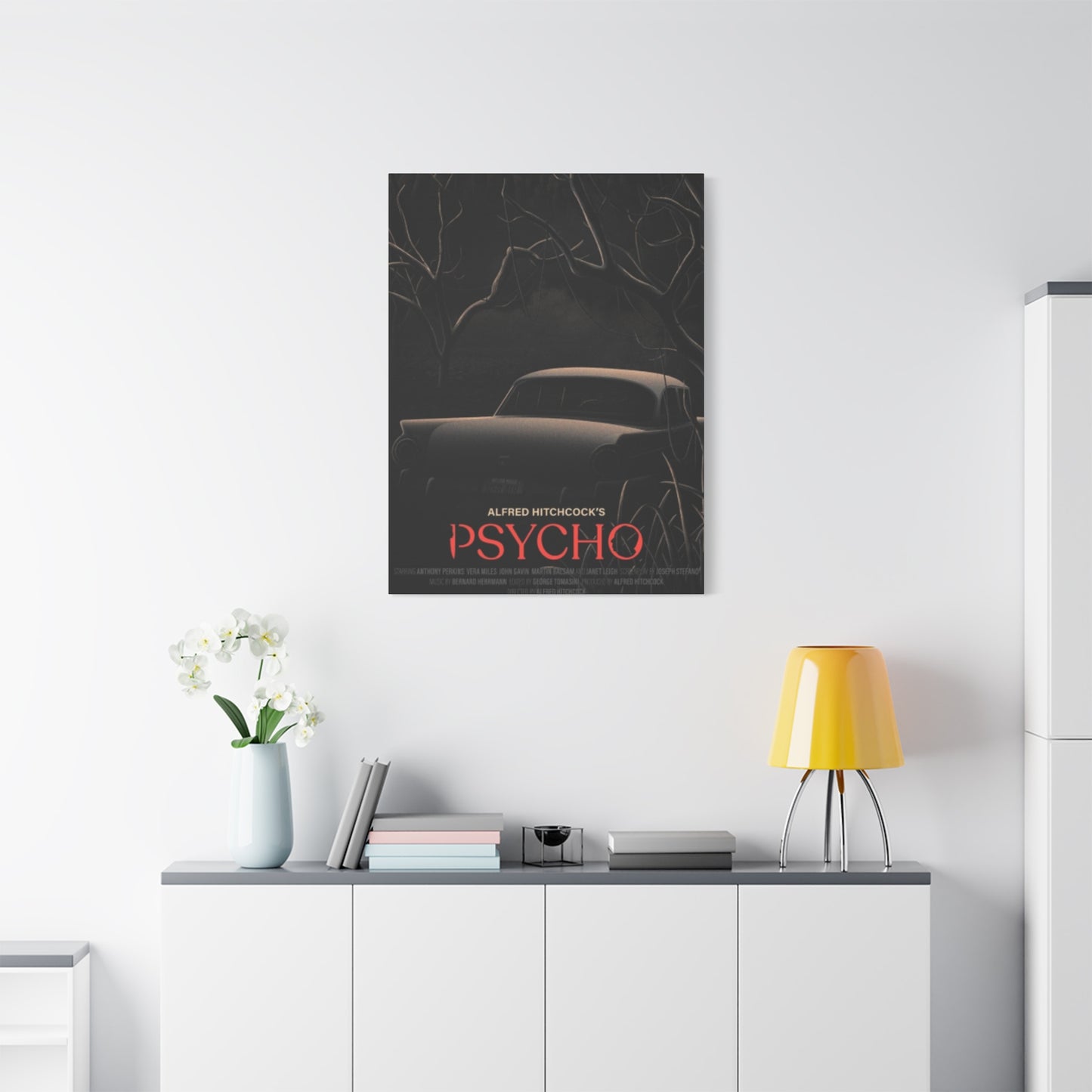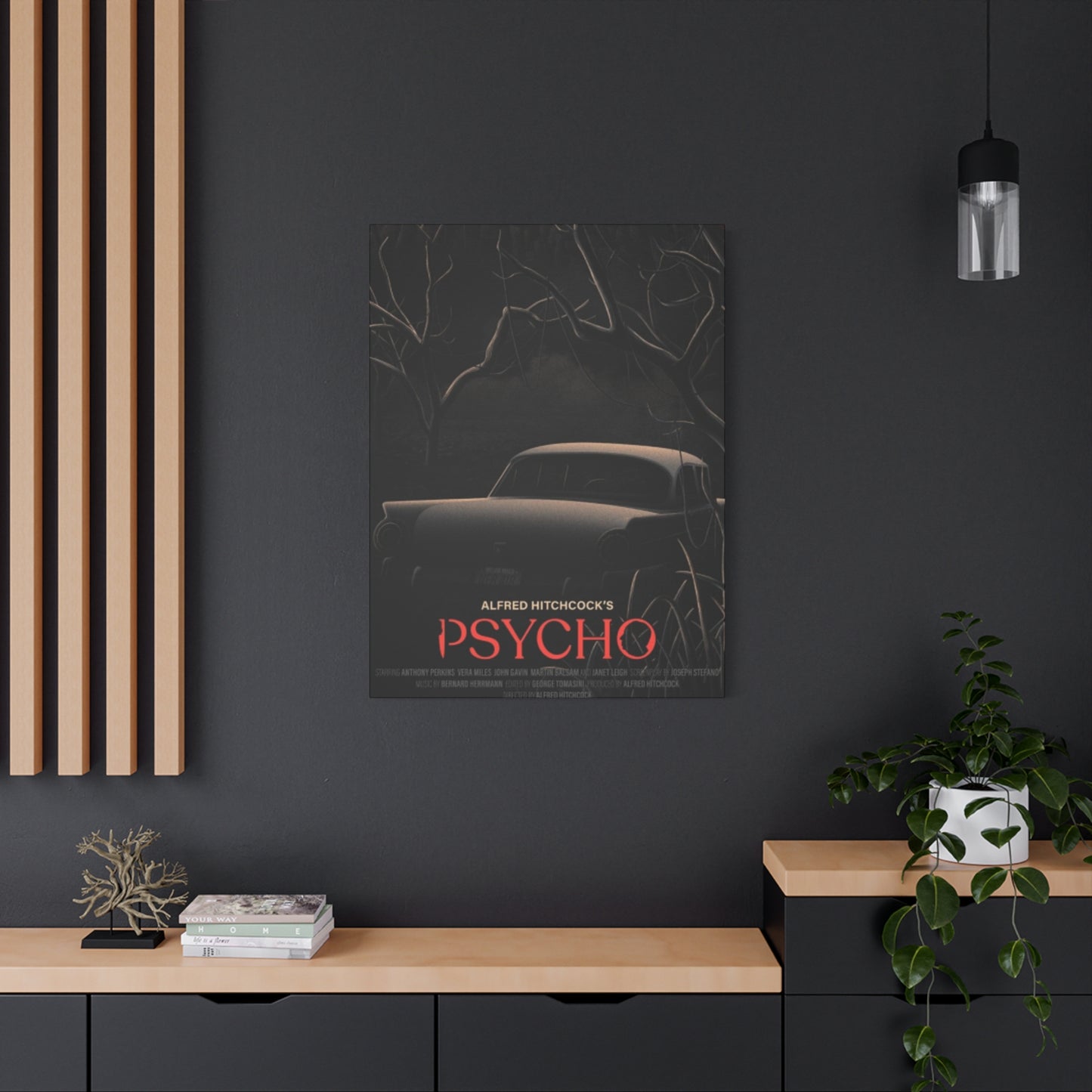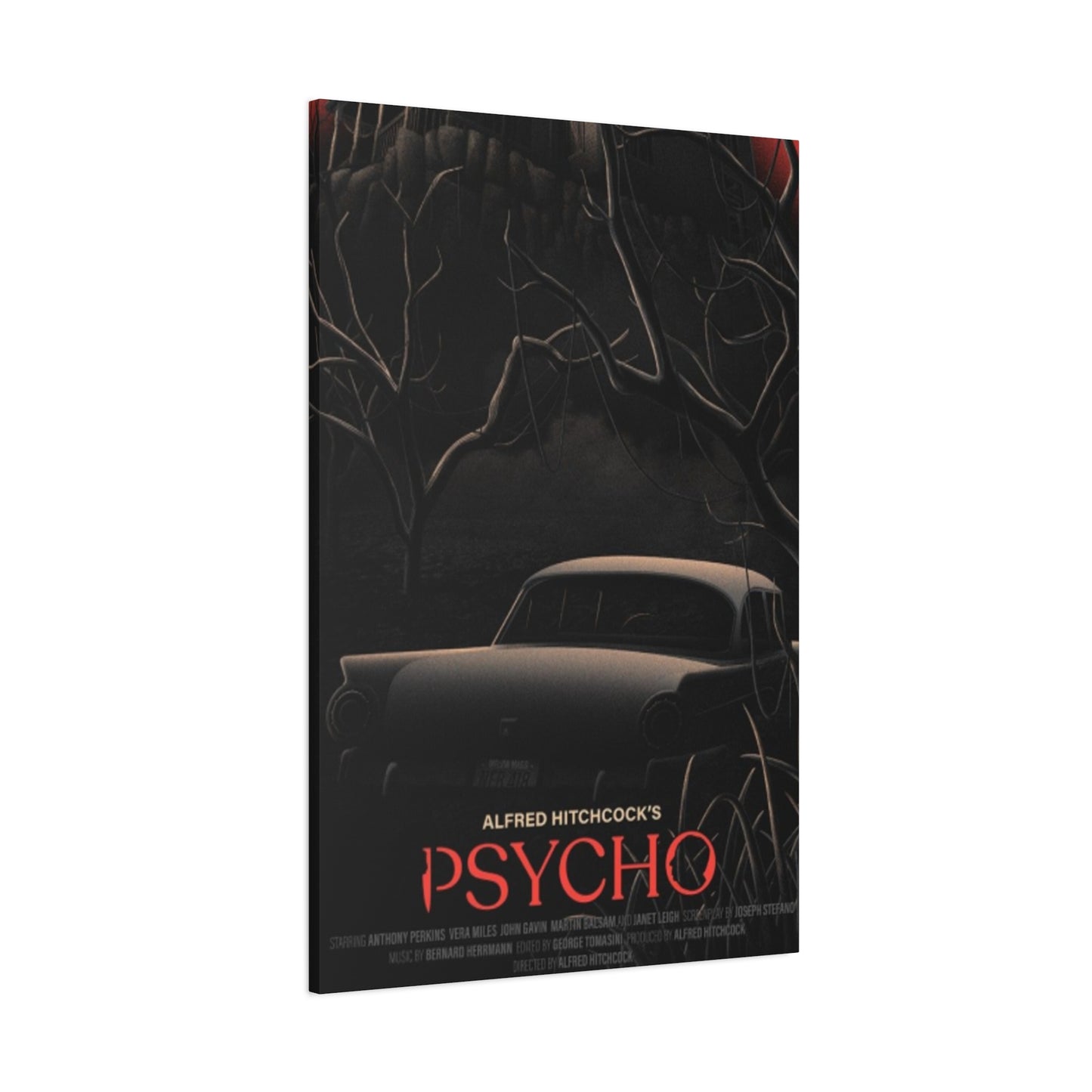Psycho-Horror Movie Poster Wall Art: Definitive Collection for Horror Enthusiasts
Horror cinema has captivated audiences for decades, delivering spine-chilling experiences that linger long after the credits roll. For passionate fans of psychological horror, displaying iconic movie posters as canvas prints represents the perfect way to celebrate beloved films while creating atmospheric environments. Psycho-horror movie poster wall art canvas prints offer an exceptional opportunity to showcase cinematic masterpieces that have shaped the genre, from Alfred Hitchcock's groundbreaking "Psycho" to contemporary psychological thrillers that continue pushing boundaries.
The appeal of horror movie posters extends far beyond simple fandom. These artistic creations serve as visual storytelling devices, condensing complex narratives into single, powerful images that evoke emotions and memories. Canvas prints provide durability and museum-quality reproduction that preserves the intricate details and vivid colors of original poster designs. Whether you're decorating a home theater, personal study, or any environment where horror appreciation takes center stage, psycho-horror movie poster wall art canvas prints deliver unmatched visual impact.
Modern printing technologies have revolutionized how we experience classic horror imagery. High-resolution canvas prints capture every nuance of vintage poster art, from the subtle gradients in background shadows to the sharp typography that announces legendary films. Professional-grade inks ensure longevity, preventing fading and maintaining color accuracy for years. This technological advancement means collectors can enjoy pristine reproductions that rival original theatrical posters without the astronomical costs associated with authentic vintage materials.
Psychological horror represents one of cinema's most sophisticated genres, relying on mental manipulation rather than explicit violence to create lasting fear. The poster art accompanying these films often reflects this subtlety, employing symbolic imagery, unsettling color palettes, and masterful composition to suggest rather than reveal. Canvas prints of psycho-horror posters become conversation pieces that intrigue viewers while hinting at the complex narratives they represent.
The Evolution of Psycho-Horror Movie Posters
The history of psychological horror movie posters parallels the development of the genre itself. Early examples from the 1920s and 1930s relied heavily on theatrical traditions, featuring dramatic typography and simple illustrations that promised supernatural thrills. As cinema matured, poster design evolved to become more sophisticated, incorporating photographic elements and artistic techniques that better captured the psychological complexity of the films they promoted.
Alfred Hitchcock's influence on both psychological horror and movie poster design cannot be overstated. His collaborations with renowned graphic artists produced some of cinema's most recognizable imagery. The original "Psycho" poster, featuring Janet Leigh's terrified expression and bold typography, established visual conventions that continue influencing poster design today. Canvas reproductions of Hitchcock's poster collection represent essential additions to any serious horror art collection.
The 1960s and 1970s marked a golden age for horror movie poster art. Designers began experimenting with surreal imagery, optical illusions, and abstract concepts that reflected the psychological themes explored in the films. This period produced countless iconic designs that have achieved legendary status among collectors. Canvas prints of posters from films like "Rosemary's Baby," "Don't Look Now," and "The Wicker Man" capture the artistic innovation that defined this era.
Contemporary psychological horror continues the tradition of exceptional poster design while incorporating modern digital techniques. Films like "Hereditary," "Midsommar," and "The Babadook" have produced poster art that combines traditional horror imagery with contemporary graphic design sensibilities. Canvas prints of these modern classics ensure that today's exceptional poster art receives the same preservation and appreciation as vintage examples.
The democratization of poster art through canvas printing has created new opportunities for appreciation and collection. Previously, owning original theatrical posters required significant financial investment and careful storage considerations. Canvas prints eliminate these barriers while maintaining the visual impact and artistic integrity of the original designs. This accessibility has contributed to a renaissance in horror poster appreciation.
Iconic Psycho-Horror Films and Their Poster Legacy
"Psycho" remains the cornerstone of psychological horror cinema, and its poster art reflects the film's groundbreaking impact. The original poster design masterfully balances revelation and concealment, showing enough to intrigue audiences while preserving the shocking surprises that made the film legendary. Canvas reproductions of "Psycho" posters capture the bold graphics and stark contrasts that made the original design so effective.
The poster campaign for "Psycho" was revolutionary in its approach to marketing horror films. Rather than relying on sensational imagery or exploitative content, the design focused on creating an atmosphere of suspense and psychological unease. This approach influenced countless subsequent horror campaigns and established design principles that remain relevant today. Canvas prints preserve these historical documents while making them accessible to contemporary collectors.
"The Silence of the Lambs" represents another milestone in psychological horror poster design. The iconic image of the death's-head hawkmoth covering a woman's mouth has become one of cinema's most recognizable images. The poster's sophisticated symbolism and artistic execution demonstrate how effective design can enhance a film's thematic content. Canvas reproductions ensure that this masterpiece of poster art maintains its visual impact and cultural significance.
"Black Swan" showcased how contemporary psychological horror could benefit from innovative poster design. The film's marketing campaign featured multiple poster variations, each exploring different aspects of the protagonist's psychological deterioration. These designs incorporated elements of classical ballet imagery with horror conventions, creating a unique visual language. Canvas prints of "Black Swan" posters represent the evolution of horror marketing into fine art territory.
"Shutter Island" demonstrated the power of minimalist design in horror poster art. The film's posters relied on atmospheric imagery and subtle symbolism rather than explicit horror elements. This approach created intrigue while reflecting the film's complex narrative structure. Canvas reproductions of "Shutter Island" posters showcase how sophisticated design can enhance storytelling even before audiences enter the theater.
International psychological horror has contributed exceptional poster designs that reflect different cultural approaches to the genre. Films like "Audition," "The Wailing," and "Burning" have produced poster art that combines genre conventions with cultural aesthetics. Canvas prints of international horror posters offer collectors the opportunity to explore global perspectives on psychological fear and artistic expression.
Canvas Print Technology and Quality Considerations
Modern canvas printing technology has reached unprecedented levels of quality and durability. Professional-grade printers utilize pigment-based inks that resist fading and maintain color accuracy for decades. The canvas materials themselves are engineered for longevity, featuring acid-free compositions and protective coatings that prevent deterioration. These technological advances ensure that psycho-horror movie poster canvas prints maintain their visual impact and investment value over time.
The printing process begins with high-resolution scanning or digital capture of original poster artwork. Professional services utilize scanning equipment capable of capturing minute details and subtle color variations that might be lost with lower-quality reproduction methods. This attention to detail ensures that canvas prints accurately represent the artistic vision of the original poster designers.
Color calibration represents a critical aspect of quality canvas printing. Professional printing services employ color management systems that ensure accurate reproduction of original poster colors. This technology is particularly important for horror movie posters, which often rely on specific color palettes to create atmospheric effects. Proper color reproduction ensures that canvas prints maintain the psychological impact intended by the original designers.
Canvas stretching and mounting require specialized expertise to achieve professional results. The canvas must be properly tensioned to prevent sagging or warping while avoiding over-stretching that could damage the printed surface. Professional mounting services use archival-quality stretcher bars and hardware that resist corrosion and maintain structural integrity. These considerations ensure that canvas prints maintain their appearance and durability over extended periods.
Protective coatings and finishing options enhance the longevity and appearance of canvas prints. UV-resistant coatings protect against sun damage while maintaining the natural texture and appearance of the canvas surface. Some finishing options include textured varnishes that replicate the appearance of original oil paintings, adding depth and authenticity to the reproduction process.
The size options available for canvas prints allow collectors to choose dimensions that best suit their display requirements. From intimate desktop sizes to massive wall installations, professional printing services can accommodate various dimensional needs. Proper scaling ensures that poster designs maintain their visual impact regardless of the final size, preserving the artistic integrity of the original compositions.
Building a Psycho-Horror Poster Collection
Creating a comprehensive psycho-horror poster collection requires careful planning and consideration of various factors. The diversity of the psychological horror genre offers numerous collecting opportunities, from focusing on specific time periods to concentrating on particular directors or artistic styles. Canvas prints make collection building more accessible while maintaining the visual impact and cultural significance of original poster art.
Establishing collection themes helps focus acquisition decisions and create coherent displays. Some collectors concentrate on specific decades, such as the golden age of 1970s horror or contemporary psychological thrillers. Others focus on particular directors like Alfred Hitchcock, David Lynch, or Darren Aronofsky. Thematic collecting ensures that individual pieces complement each other while building comprehensive representations of chosen focus areas.
Authentication and quality verification become important considerations when selecting canvas prints. Reputable printing services provide detailed information about their reproduction processes and materials. Collectors should seek providers who use archival-quality materials and professional printing equipment. Documentation of print runs and edition sizes can enhance the collectible value of limited-edition canvas reproductions.
Storage and preservation considerations apply even to canvas prints, which are more durable than paper posters but still require proper care. Climate control helps prevent expansion and contraction that could stress canvas fibers. Proper framing and mounting protect edges and provide additional structural support. These preservation measures ensure that collections maintain their value and appearance over time.
Research and documentation enhance the collecting experience while preserving important cultural and historical information. Understanding the context surrounding specific poster designs adds depth to appreciation and enjoyment. Many psycho-horror posters represent significant moments in cinema history, and collectors become custodians of these cultural artifacts through their preservation and display efforts.
Networking with other collectors and horror enthusiasts creates opportunities for knowledge sharing and acquisition. Online communities and local collector groups provide forums for discussing poster art, sharing information about rare finds, and coordinating group purchases. These connections enhance the collecting experience while building relationships based on shared interests and passions.
Displaying Psycho-Horror Canvas Prints Effectively
The presentation of psycho-horror movie poster canvas prints significantly impacts their visual effectiveness and atmospheric contribution to any environment. Proper display techniques enhance the psychological impact of horror imagery while protecting valuable artwork from damage. Understanding lighting, positioning, and complementary design elements ensures that collections achieve maximum visual impact while maintaining professional appearance standards.
Lighting plays a crucial role in the effectiveness of horror poster displays. The dramatic imagery characteristic of psychological horror benefits from carefully controlled illumination that enhances shadows and highlights without causing glare or color distortion. LED lighting systems offer energy efficiency and precise color temperature control, allowing collectors to create atmospheric lighting that complements the mood of their poster collections.
Ambient lighting considerations extend beyond direct artwork illumination to encompass the overall environmental atmosphere. Dimmer controls allow for adjustment based on viewing conditions and desired mood. The interplay between illuminated artwork and surrounding shadows creates depth and drama that enhances the psychological impact of horror imagery. Professional lighting design can transform ordinary rooms into immersive environments that celebrate horror cinema.
Wall preparation and mounting considerations ensure that canvas prints achieve proper positioning and secure attachment. Professional installation may be advisable for valuable or large-scale pieces. Proper wall anchoring prevents damage while ensuring that artwork remains securely positioned. The positioning height and angle affect viewing experience and should be adjusted based on typical viewing distances and positions.
Grouping and arrangement strategies can enhance the impact of individual pieces while creating cohesive displays. Thematic groupings based on time periods, directors, or artistic styles create visual narratives that guide viewer attention. Spacing between pieces affects the overall rhythm and flow of displays. Professional design principles can help collectors create arrangements that maximize visual impact while maintaining balance and proportion.
Environmental considerations extend to humidity control, temperature stability, and protection from direct sunlight. While canvas prints are more durable than paper posters, they still benefit from stable environmental conditions. UV-filtering glass or acrylic glazing provides additional protection for particularly valuable pieces. These protective measures ensure that collections maintain their appearance and value over extended periods.
The Psychology of Horror Poster Art
Horror movie posters operate on deep psychological levels, utilizing visual elements that trigger primal fears and emotional responses. Understanding these psychological mechanisms enhances appreciation for poster art while revealing the sophisticated techniques employed by graphic designers. Psycho-horror posters particularly excel at creating psychological tension through subtle imagery and symbolic representation.
Color psychology plays a fundamental role in horror poster design. Red suggests violence and danger while creating visceral emotional responses. Black evokes fear of the unknown and creates stark contrasts that heighten dramatic impact. These color associations operate on subconscious levels, influencing viewer emotions before conscious analysis begins. Canvas reproductions must accurately capture these color relationships to maintain psychological effectiveness.
Compositional techniques in horror posters guide viewer attention while creating psychological tension. Central focal points draw immediate attention, while peripheral elements create unease through suggested threats or hidden imagery. The balance between revealed and concealed information creates curiosity while building anticipation. These sophisticated design strategies demonstrate the artistic complexity underlying effective horror marketing.
Typography choices contribute significantly to the psychological impact of horror posters. Font selections convey mood and genre expectations through their visual characteristics. Jagged or distorted lettering suggests violence or psychological instability, while elegant typography might hint at sophisticated supernatural themes. The integration of text and imagery creates unified designs that communicate complex messages through visual means.
Symbolic imagery in psycho-horror posters operates through cultural associations and archetypal representations. Common symbols like mirrors, shadows, eyes, and architectural elements carry specific psychological meanings that enhance narrative suggestions. These symbols work subconsciously to create unease and anticipation, preparing audiences for the psychological experiences awaiting them in the theaters.
The uncanny valley effect appears frequently in psychological horror poster design through the use of familiar imagery presented in unsettling contexts. This technique creates cognitive dissonance that produces psychological discomfort without explicit threatening content. Canvas reproductions must capture these subtle visual relationships to maintain the uncanny effects intended by the original designers.
Cultural Impact of Psycho-Horror Movie Posters
Psycho-horror movie posters have transcended their original marketing purposes to become significant cultural artifacts that influence art, design, and popular culture. These images have achieved iconic status that extends far beyond cinema, appearing in galleries, museums, and academic studies. Canvas reproductions allow broader audiences to experience and appreciate these cultural touchstones while preserving them for future generations.
The influence of horror poster design on contemporary graphic design cannot be overstated. Modern designers regularly reference classic horror posters for inspiration, incorporating their visual techniques and stylistic approaches into commercial and artistic projects. This ongoing influence demonstrates the lasting artistic significance of horror movie poster art and justifies its preservation through high-quality canvas reproductions.
Academic studies of horror cinema frequently analyze poster art as primary source material for understanding cultural attitudes toward fear, gender, and social issues. Horror posters reflect the anxieties and concerns of their historical periods while providing insights into marketing strategies and audience expectations. Canvas prints make these important cultural documents accessible to researchers and students while protecting original materials from handling damage.
Museum exhibitions dedicated to movie poster art increasingly recognize horror posters as legitimate artistic expressions worthy of serious consideration. Major institutions have mounted exhibitions celebrating the artistry and cultural significance of cinema marketing materials. Canvas reproductions allow museums to display poster art without risking damage to valuable originals while making these exhibitions accessible to broader audiences.
The collectible market for horror movie posters has grown substantially, with rare original posters commanding significant prices at auction. This market appreciation reflects growing recognition of poster art as legitimate collectible category. Canvas reproductions provide entry-level collecting opportunities while preserving access to important imagery for enthusiasts who cannot afford original materials.
International perspectives on horror poster design reveal cultural differences in approaching fear and psychological themes. Comparing American, European, and Asian horror posters demonstrates how different cultures visualize and market psychological fear. Canvas print collections can represent these global perspectives, creating opportunities for cross-cultural appreciation and understanding.
Technical Aspects of Canvas Print Production
Professional canvas print production involves multiple technical considerations that affect final quality and durability. Understanding these technical aspects helps collectors make informed decisions about printing services while ensuring that their psycho-horror poster reproductions meet professional standards. The complexity of modern printing technology requires specialized knowledge and equipment to achieve optimal results.
Digital file preparation represents the foundation of quality canvas printing. Original poster artwork must be digitized at sufficient resolution to support the intended final print size. Professional scanning services utilize high-end equipment capable of capturing fine details and accurate colors. File preparation includes color correction, dust and scratch removal, and optimization for the printing process.
Printer technology significantly affects final print quality and longevity. Professional-grade inkjet printers designed for fine art reproduction utilize multiple ink cartridges to achieve accurate color reproduction and smooth gradations. These printers can produce archival-quality prints that maintain their appearance for decades when properly cared for. The choice of printer technology affects both initial quality and long-term durability.
Ink formulations designed for canvas printing provide superior adhesion and color stability compared to standard printing inks. Pigment-based inks offer superior lightfastness and color stability compared to dye-based alternatives. UV-resistant formulations provide additional protection against fading and color shift. These specialized inks represent significant investments by professional printing services but ensure superior results.
Canvas materials vary significantly in quality and suitability for different applications. Professional-grade canvas features consistent weave patterns, neutral pH levels, and proper priming for ink adhesion. Weight and texture considerations affect both appearance and durability. Higher-quality canvas materials command premium prices but provide superior results and longevity.
Stretching and mounting techniques require specialized equipment and expertise to achieve professional results. Proper tension distribution prevents sagging while avoiding over-stretching that could damage the printed surface. Gallery-wrap mounting conceals edges while providing clean, professional appearance. These technical considerations affect both immediate appearance and long-term stability.
Quality control processes ensure that finished prints meet professional standards before delivery to customers. Color accuracy verification, print defect inspection, and mounting quality assessment represent standard quality control procedures. Professional printing services maintain detailed records of their quality control processes and provide guarantees covering defects and customer satisfaction.
Historical Significance of Hitchcock's Psycho Poster
Alfred Hitchcock's "Psycho" poster represents a watershed moment in horror movie marketing and graphic design. The poster's innovative approach to promoting psychological horror established conventions that continue influencing poster design today. Understanding the historical context and design innovations of the original "Psycho" poster enhances appreciation for its continued relevance and cultural significance.
The marketing campaign for "Psycho" broke new ground in horror movie promotion through its sophisticated psychological approach. Rather than relying on sensational imagery or explicit content, the poster design created intrigue through suggestion and symbolism. This strategy reflected Hitchcock's understanding of psychological manipulation and his commitment to preserving the film's shocking surprises.
Graphic designer considerations for the "Psycho" poster involved balancing multiple competing demands. The design needed to attract audiences while avoiding spoilers that would diminish the film's impact. The typography choices, color palette, and compositional elements all contributed to creating an atmosphere of suspense without revealing specific plot details. These design challenges produced innovative solutions that influenced subsequent horror marketing.
The poster's visual elements work together to create psychological tension through careful composition and symbolic imagery. The fragmented layout suggests psychological instability while maintaining visual coherence. The interplay between photographic and graphic elements creates depth and complexity that rewards closer examination. These sophisticated design techniques demonstrate the artistic sophistication underlying effective horror marketing.
Cultural reception of the "Psycho" poster reflected broader social attitudes toward horror entertainment and psychological themes. The poster's success demonstrated audience appetite for more sophisticated horror experiences that emphasized psychological rather than supernatural fears. This cultural shift influenced both film production and marketing strategies throughout the following decades.
The poster's influence on subsequent horror marketing can be traced through decades of film promotion. Design elements introduced in the "Psycho" poster became standard conventions in horror movie marketing. Contemporary horror posters continue referencing and building upon the visual language established by Hitchcock's marketing materials. This ongoing influence demonstrates the lasting artistic and cultural significance of the original design.
Preservation efforts for original "Psycho" posters reflect their recognition as significant cultural artifacts. Major collections and museums actively seek original theatrical materials from the film's release. Canvas reproductions provide access to this important imagery while protecting valuable originals from handling damage. These preservation efforts ensure that future generations can appreciate this significant cultural document.
Contemporary Psychological Horror Poster Innovations
Modern psychological horror films continue pushing the boundaries of poster design while building upon established genre conventions. Contemporary designers utilize digital technologies and sophisticated marketing strategies to create poster campaigns that rival the artistic achievements of classic examples. Canvas reproductions of these modern masterpieces ensure their preservation and accessibility for future appreciation.
"Hereditary" represents a significant achievement in contemporary horror poster design. The film's marketing campaign featured multiple poster variations that explored different aspects of the narrative and thematic content. The designs incorporated traditional horror imagery with contemporary graphic design sensibilities, creating a unique visual language that reflected the film's innovative approach to psychological fear.
The poster campaign utilized symbolic imagery and color psychology to create emotional responses that prepared audiences for the film's psychological intensity. The careful balance between revelation and concealment demonstrated sophisticated understanding of contemporary audience expectations while maintaining surprise and suspense. These design strategies reflect the evolution of horror marketing into increasingly sophisticated artistic territory.
"Midsommar" showcased how contemporary horror could benefit from unexpected visual approaches that challenged genre conventions. The film's posters featured bright, cheerful imagery that contrasted dramatically with traditional horror aesthetics. This innovative approach created cognitive dissonance that enhanced the film's thematic exploration of hidden darkness beneath beautiful surfaces.
The marketing materials for "Midsommar" demonstrated how contemporary designers could subvert audience expectations while maintaining genre appeal. The use of floral imagery and bright colors created immediate visual impact while suggesting the film's unique approach to horror themes. This innovative strategy required sophisticated understanding of both genre conventions and audience psychology.
"The Babadook" produced poster art that combined traditional monster imagery with contemporary design aesthetics. The film's posters featured minimalist designs that suggested psychological complexity while maintaining visual accessibility. The careful balance between artistic sophistication and commercial appeal demonstrated the potential for horror poster art to achieve both cultural significance and marketing effectiveness.
Digital design tools have expanded the possibilities for horror poster creation while maintaining connection to traditional artistic principles. Contemporary designers can achieve effects and visual complexity that would have been impossible with earlier technologies. However, the most successful contemporary horror posters maintain focus on fundamental design principles that have proven effective throughout the genre's history.
International Perspectives on Psycho-Horror Posters
Horror cinema represents a global phenomenon, and different cultures approach psychological fear and poster design through distinctive artistic and cultural lenses. International psycho-horror posters provide fascinating insights into cultural attitudes toward fear, violence, and psychological themes while demonstrating the universal appeal of well-crafted horror imagery. Canvas reproductions of international horror posters offer collectors opportunities to explore global perspectives on genre conventions.
Japanese horror poster design reflects unique cultural aesthetics and philosophical approaches to psychological fear. Films like "Audition" and "Ring" produced poster art that emphasized suggestion and atmospheric tension rather than explicit imagery. The minimalist design approaches characteristic of Japanese horror marketing create psychological unease through carefully controlled visual elements and symbolic representation.
The cultural context surrounding Japanese horror influences poster design through traditional artistic principles and contemporary anxieties. Concepts like ma (negative space) and wabi-sabi (imperfect beauty) appear in horror poster compositions, creating uniquely Japanese approaches to genre imagery. These cultural influences demonstrate how universal horror themes can be expressed through distinctive artistic traditions.
European psychological horror has produced poster art that reflects sophisticated artistic sensibilities and cultural attitudes toward psychological themes. Films like "Don't Look Now" and "The Wicker Man" featured poster designs that emphasized artistic merit alongside commercial appeal. The integration of fine art principles with genre conventions created poster art that achieved cultural significance beyond its original marketing purposes.
Scandinavian horror films have contributed exceptional poster designs that reflect regional attitudes toward darkness, isolation, and psychological complexity. The stark aesthetic sensibilities characteristic of Scandinavian design create horror posters that achieve maximum impact through minimal visual elements. These designs demonstrate how cultural aesthetics can enhance rather than diminish genre effectiveness.
French horror poster design often incorporates intellectual and artistic approaches that reflect the country's cinematic traditions. Films like "High Tension" and "Martyrs" produced marketing materials that balanced artistic sophistication with genre requirements. These posters demonstrate how cultural appreciation for artistic merit can enhance rather than compromise commercial horror marketing.
Contemporary global horror continues producing innovative poster designs that reflect international perspectives on psychological fear and cultural anxieties. Streaming platforms and digital distribution have made international horror more accessible, increasing appreciation for diverse approaches to genre conventions. Canvas reproductions preserve these cultural documents while making them accessible to global audiences interested in international horror perspectives.
Art Direction and Visual Storytelling in Horror Posters
Effective horror movie posters function as compressed narratives that communicate complex story elements and thematic content through visual means. The art direction process involves multiple creative decisions that affect both immediate visual impact and long-term cultural significance. Understanding these artistic processes enhances appreciation for poster art while revealing the sophisticated creative work underlying effective horror marketing.
Art directors for horror films must balance multiple competing demands while creating cohesive visual campaigns. The poster design must attract audiences while avoiding spoilers that would diminish the film's impact. Budget constraints and production schedules affect creative decisions, requiring innovative solutions that maximize impact within practical limitations. These challenges often produce unexpectedly creative results that achieve lasting cultural significance.
Visual storytelling techniques in horror posters rely on symbolic imagery and suggested narratives rather than explicit plot revelation. Effective designs create emotional responses and build anticipation without revealing specific story details. The careful balance between information and mystery requires sophisticated understanding of audience psychology and narrative structure.
Compositional strategies guide viewer attention while creating psychological responses appropriate to horror themes. The placement of visual elements affects both immediate impact and sustained examination. Leading lines, focal points, and negative space all contribute to creating designs that reward both quick glance and detailed study. These compositional considerations demonstrate the artistic sophistication underlying effective horror poster design.
Color relationships in horror posters operate on both emotional and symbolic levels to enhance thematic content. Warm colors suggest safety and comfort, while cool colors evoke unease and supernatural themes. Complementary color schemes create visual tension that mirrors psychological themes, while monochromatic approaches can achieve sophisticated atmospheric effects. Understanding color psychology helps appreciate the artistic decisions underlying effective poster design.
Typography integration presents unique challenges in horror poster design, where text must complement rather than compete with visual imagery. Font choices convey genre expectations while maintaining readability and visual hierarchy. The integration of text and image requires careful balance to achieve unified designs that communicate effectively at various sizes and viewing distances.
The evolution of horror poster art direction reflects changing technology, cultural attitudes, and marketing strategies. Contemporary digital tools allow unprecedented creative freedom while maintaining connection to traditional design principles. The most successful contemporary horror posters demonstrate how technological innovation can enhance rather than replace fundamental artistic principles.
Collecting Strategies and Market Considerations
The market for horror movie poster art has grown substantially as recognition of its artistic and cultural significance has increased. Canvas reproductions have democratized collecting by providing access to important imagery without the high costs associated with original theatrical materials. Understanding market dynamics and collecting strategies helps enthusiasts build meaningful collections while making sound investment decisions.
Authentication represents a crucial consideration for collectors of original poster materials, but canvas reproductions eliminate many authentication concerns while providing access to important imagery. Reputable printing services provide detailed information about their reproduction processes and edition sizes. Limited edition canvas prints can achieve collectible status while maintaining accessibility for enthusiasts with moderate budgets.
Investment potential for horror poster art varies significantly based on factors including cultural significance, artistic merit, and rarity. Original theatrical posters from significant films can achieve substantial appreciation, but canvas reproductions typically maintain stable rather than increasing values. Collectors should focus primarily on personal enjoyment and cultural appreciation rather than investment potential when building canvas print collections.
Market trends in horror collecting reflect broader cultural attitudes toward genre entertainment and artistic recognition. Increased academic and institutional recognition of poster art as legitimate cultural expression has contributed to market growth. Contemporary horror films producing exceptional poster art may achieve future collectible status, making current acquisition opportunities potentially significant.
Condition considerations affect both original posters and canvas reproductions, though durability advantages of canvas make condition less critical than with paper materials. Proper storage and display practices preserve value and appearance regardless of collection focus. Understanding preservation requirements helps collectors protect their investments while enjoying their collections.
Professional appraisal services can provide valuation guidance for significant collections, though most canvas reproduction collections achieve value primarily through personal enjoyment rather than monetary appreciation. Documentation of acquisition sources and printing details enhances both personal satisfaction and potential future value. These records become particularly important for limited edition or artist-signed reproductions.
Networking within collector communities provides opportunities for knowledge sharing, acquisition assistance, and social connection based on shared interests. Online forums and local collector groups offer resources for education and acquisition while building relationships with fellow enthusiasts. These connections enhance the collecting experience beyond simple material acquisition.
Technical Innovation in Horror Poster Reproduction
Modern reproduction technology has revolutionized access to historic and contemporary poster art while achieving quality levels that rival original printing processes. Understanding these technological capabilities helps collectors make informed decisions about reproduction quality and long-term satisfaction. Professional-grade reproduction services utilize equipment and materials that ensure exceptional results and extended durability.
Digital capture technology for poster reproduction has achieved remarkable sophistication in color accuracy and detail resolution. High-end scanning equipment can capture minute details invisible to casual observation while maintaining accurate color relationships across the entire spectrum. These technological capabilities ensure that reproductions preserve the artistic vision and technical excellence of original poster designs.
Color management systems employed by professional reproduction services ensure accurate color reproduction across different viewing conditions and display environments. Calibrated monitors, standardized lighting conditions, and quality control protocols maintain consistency throughout the production process. These technical considerations become particularly important for horror posters, which often rely on specific color relationships to achieve psychological effects.
Printing technology continues advancing toward higher resolution, broader color gamuts, and improved durability. Professional inkjet printers designed for fine art reproduction can achieve detail levels and color accuracy that exceed original printing processes in many cases. These technological advantages allow contemporary reproductions to preserve and even enhance the visual impact of historic poster designs.
Material science innovations have produced canvas substrates and coating systems specifically designed for fine art reproduction. These materials offer superior durability, color retention, and surface characteristics compared to traditional canvas options. Archival-quality materials ensure that contemporary reproductions can achieve museum-quality standards for long-term preservation and display.
Finishing options have expanded to include protective coatings, texture enhancements, and mounting systems that enhance both appearance and durability. UV-resistant coatings provide protection against fading while maintaining natural surface characteristics. Texture enhancements can replicate the appearance of original painting techniques or printing processes. These options allow collectors to customize reproductions based on personal preferences and display requirements.
Quality assurance processes employed by professional reproduction services ensure consistent results while identifying and correcting potential defects before delivery. Automated inspection systems can detect color variations, print defects, and mounting irregularities that might compromise final quality. These technical safeguards provide confidence in reproduction quality while protecting customer investments.
The Role of Typography in Horror Poster Design
Typography represents a crucial but often underappreciated element of effective horror poster design. Font choices, text placement, and typographic treatment contribute significantly to overall visual impact while communicating genre expectations and thematic content. Understanding typographic considerations enhances appreciation for poster design while revealing the sophisticated artistic decisions underlying effective horror marketing.
Font selection for horror posters requires balancing readability with atmospheric contribution to overall design impact. Traditional serif fonts can suggest classic or literary horror themes, while modern sans-serif choices create contemporary or clinical feelings appropriate to psychological horror. Custom lettering allows unique artistic expression while maintaining genre recognition and commercial effectiveness.
The psychological impact of typography operates through cultural associations and visual characteristics that trigger emotional responses. Jagged or distorted lettering suggests violence or instability, while elegant script fonts might indicate supernatural or gothic themes. These associations work subconsciously to prepare audiences for specific types of horror experiences while enhancing the overall poster design.
Integration challenges arise when combining typography with complex visual imagery in horror poster design. Text must remain readable while contributing to rather than competing with visual elements. Successful integration requires careful consideration of placement, sizing, and color relationships that support unified design objectives. These technical challenges often produce innovative solutions that enhance both elements.
Hierarchical organization of textual information guides viewer attention while communicating essential information effectively. Title treatment typically receives primary emphasis, while supporting information like cast names and release dates require secondary consideration. This hierarchy must function across different poster sizes and viewing distances while maintaining visual balance and artistic coherence.
Cultural considerations affect typography choices for international horror film marketing, where different languages and writing systems require adapted design approaches. Font choices must maintain visual consistency while accommodating linguistic requirements. These adaptations demonstrate how effective design principles can transcend cultural boundaries while respecting local requirements and expectations.
Historical evolution of horror poster typography reflects changing design trends and technological capabilities. Early horror posters relied on hand-lettering and simple fonts limited by printing technology. Contemporary digital tools allow unprecedented typographic creativity while maintaining connection to established genre conventions. This evolution demonstrates how technological advancement can enhance rather than replace fundamental design principles.
Lighting and Atmosphere in Horror Poster Display
The presentation environment significantly affects the impact and appreciation of psycho-horror movie poster canvas prints. Proper lighting design enhances the psychological effects intended by original poster artists while protecting valuable artwork from damage. Understanding lighting principles helps collectors create displays that maximize visual impact while ensuring long-term preservation of their investments.
Natural lighting considerations require careful evaluation of sun exposure and seasonal variations that could affect both visibility and preservation. Direct sunlight can cause fading and color shift in canvas prints, while inadequate natural light reduces visual impact. Window treatments and positioning strategies can balance these competing concerns while maintaining optimal display conditions throughout daily and seasonal cycles.
Artificial lighting systems offer precise control over illumination conditions while providing consistent results regardless of external factors. LED technology provides energy-efficient operation with minimal heat generation that could affect canvas stability. Color temperature selection affects the mood and visibility of horror poster displays, with cooler temperatures creating clinical atmospheres while warmer options suggest intimate or nostalgic environments.
Directional lighting techniques can enhance the dramatic qualities inherent in horror poster imagery while creating atmospheric effects that complement the displayed artwork. Track lighting systems provide flexibility for adjusting illumination based on specific poster requirements or changing display arrangements. Spotlighting can emphasize particular pieces while creating dramatic shadow effects that enhance overall environmental atmosphere.
Ambient lighting coordination ensures that poster displays integrate effectively with surrounding environmental conditions. The relationship between direct artwork illumination and general room lighting affects both visual impact and viewer comfort. Dimmer controls allow adjustment based on viewing occasions and desired atmospheric effects, creating flexibility for different uses of display environments.
UV filtration becomes important for protecting canvas prints from ultraviolet damage that could cause fading or color shift over time. Specialized UV-filtering bulbs or glazing materials provide protection while maintaining color accuracy and visual clarity. These protective measures become particularly important for valuable or irreplaceable pieces that justify additional preservation expenses.
Professional lighting design services can provide expertise for complex installations or valuable collections that justify specialized attention. Lighting professionals understand the technical requirements for artwork preservation while creating visually stunning displays that enhance appreciation and enjoyment. These services become particularly valuable for museum-quality collections or commercial display applications.
Preservation and Conservation of Canvas Prints
Canvas prints offer superior durability compared to paper posters, but proper preservation practices remain important for maintaining appearance and value over extended periods. Understanding conservation principles helps collectors protect their investments while ensuring continued enjoyment of their psycho-horror poster collections. Professional conservation techniques can be adapted for private collections with appropriate knowledge and materials.
Environmental control represents the foundation of effective canvas preservation, with temperature and humidity stability preventing expansion and contraction cycles that stress canvas fibers. Ideal conditions maintain temperature between 65-70 degrees Fahrenheit with relative humidity between 45-55 percent. Gradual changes cause less stress than rapid fluctuations, making consistent conditions more important than perfect levels.
Air quality considerations include protection from pollutants, dust, and chemical contaminants that could affect canvas surfaces or printing inks. Filtration systems remove airborne particles while chemical filters address gaseous pollutants. These measures become particularly important in urban environments or locations with industrial activity that could introduce harmful contaminants.
Handling procedures for canvas prints require careful attention to surface protection and structural support. Clean hands or cotton gloves prevent oil transfer while proper lifting techniques avoid stress concentrations that could damage canvas or mounting systems. Professional handling practices extend canvas life while maintaining appearance quality throughout the collection period.
Conclusion
The Psycho-Horror Movie Poster Wall Art: Definitive Collection for Horror Enthusiasts stands as the ultimate tribute to one of cinema’s most thrilling and psychologically intense genres. This curated collection captures the eerie, unsettling, and often mind-bending elements that define psycho-horror, offering fans and collectors a unique way to bring their passion for chilling storytelling into their living spaces. More than mere decoration, these posters are iconic symbols of fear, suspense, and the exploration of the human psyche.
What makes this collection truly special is its ability to evoke the raw intensity and complex emotions that psycho-horror movies are known for. From classic cult favorites to modern masterpieces, each poster reflects the dark themes, haunting imagery, and unforgettable characters that have captivated audiences worldwide. Whether it’s the sinister shadows, the psychological tension, or the shocking twists, this wall art collection invites viewers to immerse themselves in the chilling atmosphere that psycho-horror so expertly crafts.
Designed with both aesthetic appeal and fan appreciation in mind, the collection offers a wide range of artistic styles—from vintage-inspired prints and minimalist designs to bold, graphic interpretations. This versatility allows collectors to choose pieces that fit their individual tastes, whether they prefer a nostalgic homage to classic films or striking contemporary artwork. The high-quality materials and printing techniques ensure that each poster retains vivid colors and sharp details, making them ideal for display in home theaters, bedrooms, or personal galleries.
Furthermore, this collection serves as a celebration of the genre’s rich history and cultural impact. Psycho-horror movies have long pushed the boundaries of storytelling, challenging viewers to confront fear, identity, and the darkest corners of the mind. By bringing these iconic posters into your home, you honor that legacy and keep the thrilling spirit of the genre alive.
Beyond its visual and cultural significance, the collection also creates a unique ambiance that can transform any space. Whether you want to create a chilling, immersive environment or simply express your love for horror, these posters add an edge of suspense and excitement. They make perfect conversation starters, sparking intrigue and admiration from fellow enthusiasts and guests alike.
In conclusion, the Psycho-Horror Movie Poster Wall Art: Definitive Collection for Horror Enthusiasts is more than a set of images—it’s a gateway into the thrilling world of psychological terror. For anyone passionate about horror cinema, this collection offers a stylish, meaningful, and powerful way to celebrate the genre and elevate their home décor with a hauntingly unforgettable flair.

















